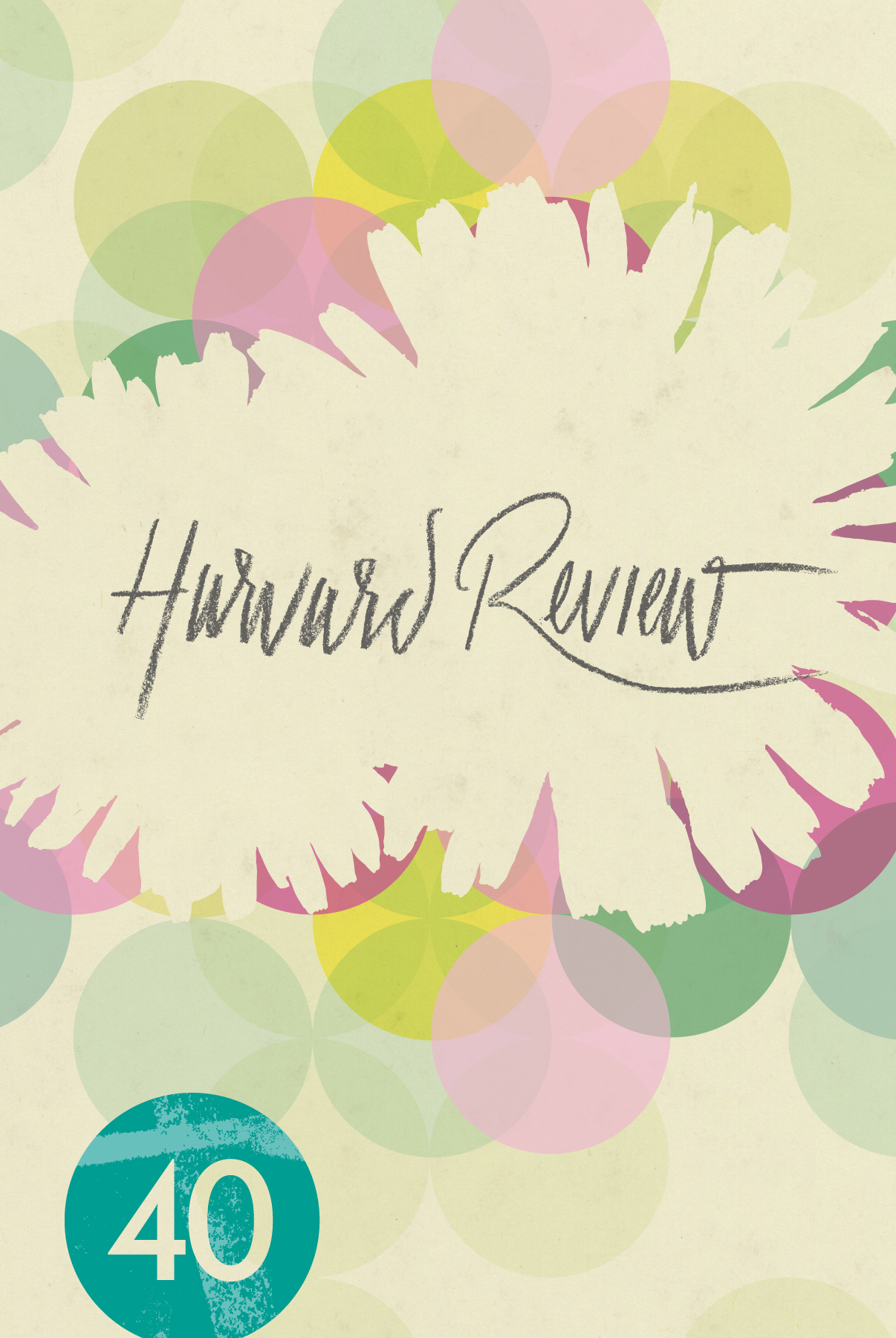HR 40 Editorial
by Christina Thompson
One day a few months ago a letter came in the mail indicating that our printer was on the verge of bankruptcy. This was news to us and not good news. We have been printing with the same company since 2001 and our account manager is like an old friend. I’ve known him since before he got married, I remember when his children were born. Needless to say, I got right on the phone. It turned out that the company he worked for had, in fact, gone belly up, but mercifully another printer had stepped in and hired the entire crew: managers, pressmen, office staff, even the delivery guy. This was a great relief to all of them, of course, but it was also good news to me and my designer—who is, incidentally, another person I’ve worked with for close to ten years. I also remember when he got married and when his first child was born.
One of the benefits of doing something for a long time lies in the relationships you develop, mostly in our case with writers, but also with the industry professionals we rely on to produce Harvard Review. The third person in our professional line up, in addition to the printer and designer, is our copyeditor. My relationship with her goes back a mere four or five years, but in that time I have developed a deep attachment to her work. I’m sure no one reads Harvard Review as carefully as she does—it is, after all, her job—but since she’s both the first and, in some sense, the most attentive reader, I’m always curious to see what she has to say.
I keep all her marked-up pages to show the students in my editing class (as examples of what they might aspire to), but also because I like her critical marginalia. It is not every copy editor who bothers to comment on the content, but ours always lets us know when she likes a piece of writing, and even occasionally when she does not. These annotations have become more frequent over the years—a reflection, I like to think, of our evolving friendship.
What I particularly enjoy about her commentary—which is made on sticky notes attached to the pages as if to suggest that it is ancillary to her actual work—is that it so often emphasizes her relationship to the text. “I am grateful to have had an opportunity to read this one.” “So glad this one has a happy ending.” “Oh, now my heart is breaking!”
The current issue of the journal, I am happy to say, has pleased her on the whole. She had some trouble fact-checking the Daniel Torday essay, which I unfortunately forgot to flag as a piece about the unreliability of memory. It wasn’t until she was three-quarters of the way through that she realized the errors were intentional. “At first,” she wrote, “I was a bit aghast.”
I think Torday’s essay is very funny. In fact, there are several funny pieces here: Madeline McDonnell’s delightful account of an academic on the cusp of marriage, which is really about playing with words, or Deborah Milstein’s (Mil-steen? Mil-stine?) essay on names, or Floyd Skloot’s exuberant story about prancing around as a rooster in a college play. But not everything in the issue is funny; when I first sent it out for copyediting I believe I characterized it as “a mixture of the madcap and the grim.” At the grim end of the spectrum are a couple of stories, one set during the war in Cambodia and another about the slaughter of Aborigines on the nineteenth-century Australian frontier. Alexander Maksik’s tobogganing story is also on the dark side, as is Ben Roberts’s eccentric tale of a disintegrating relationship, which our copyeditor described as both madcap and grim.
There is a great deal more in the issue worth reading: Joelle Biele’s moving essay on childhood, Jennifer Haigh’s elegant story set in Bakerton during WWII, Brandon Lussier’s powerful translation of the Estonian poet Hasso Krull, or Malachi Black’s poem, “A Memo to the Self Possessed,” about which our copyeditor noted, “This poem is wonderful: the meter, the rhymes, the metaphors. Black is great.”
Published on October 17, 2024
First published in Harvard Review 40

